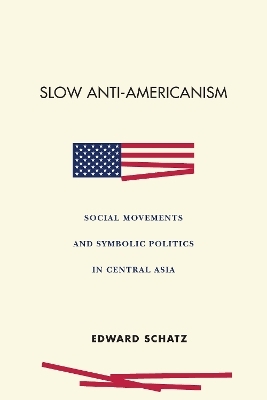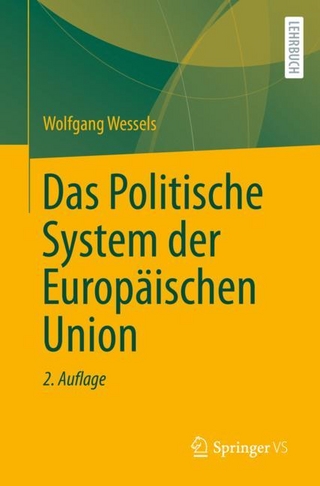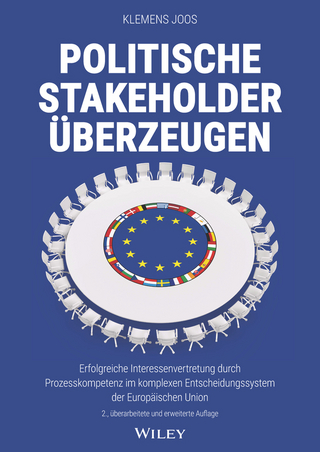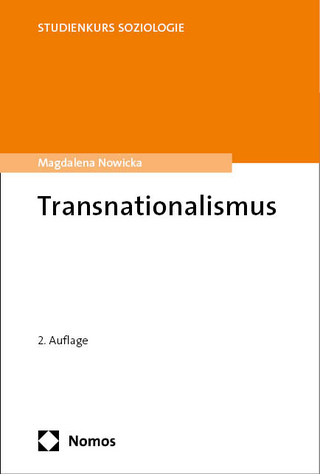
Slow Anti-Americanism
Stanford University Press (Verlag)
978-1-5036-1432-1 (ISBN)
Most treatments of anti-Americanism focus on politics in the realm of presidential elections and foreign policies. By focusing instead on symbols, Schatz lays bare how changing public attitudes shift social relations in politically significant ways, and considers how changing symbolic depictions of the United States recombine the raw material available for social mobilizers. Just like sediment traveling along waterways before reaching its final destination, the raw material that constitutes symbolic America can travel among various social groups, and can settle into place to form the basis of new social meanings. Symbolic America, Schatz shows us, matters for politics in Central Asia and beyond.
Edward Schatz is Associate Professor of Political Science at the University of Toronto. His previous books include Paradox of Power: The Logics of State Weakness in Eurasia (2017) and Political Ethnography: What Immersion Contributes to the Study of Power (2009).
Contents and AbstractsIntroduction: Slow Anti-Americanism chapter abstractWhile anti-Americanism is typically studied through the lens of "high politics," this introductory chapter contends that such approaches blind us to the political dynamics of this important phenomenon. Instead, the chapter introduces slow anti-Americanism, which takes better stock of the phenomenon. The chapter shows that attention to the symbolic power of "America" allows us to view how social and political mobilizers use changing symbolic raw material to further their goals. It emphasizes that changes to symbolic America may occur slowly, leaving resonant social meanings in their wake. Such meanings can be quarried by future generations for political benefit. The chapter previews how the Central Asian cases provide new analytic traction on a complex problem.
1America's Changing Image chapter abstractThis chapter traces how images of the United States changed in the Central Asian region from the Soviet period into the post-Soviet period. Setting the stage for the discussion of social movements that follows, this chapter makes three points. First, Central Asia's initial imaginings of the United States were the product of the Soviet period, and symbolic America for Central Asians was similar to what it was for other Soviet citizens—an ambiguous cluster of polyvalent but resonant images. Second, after an initial post-Soviet period of being overwhelmed by positive images of the United States, Central Asian opinions of the US declined. This downward trend occurred less because of concrete changes to US policy than because of the slow-moving processes of sedimentation. Third, because images of the United States had multiplied and diversified, a wider range of images became available for social mobilizers. They would be the symbolic raw material for Central Asia's social movements to use in the 2000's and beyond.
2Islamist Trajectories chapter abstractThis chapter traces the arcs of Islamist mobilizers. First, it introduces a plural understanding of Islamism, recognizing that whatever theological consensus the pious might seek, real-world contexts witness a striking variety of ways that religion and politics intersect. Second, the chapter highlights the rise of Islamic piety since the Soviet collapse, arguing against a simplistic notion that greater piety necessarily produces a politics inflected by religion. Finally, the chapter details how three Islamist movements—Hizb ut-Tahrir, the Islamic Renaissance Party of Tajikistan, and the Islamic Movement of Uzbekistan—use the changing American image. The examples underscore that, while America's image matters in Central Asia, how precisely its significance becomes political depends on image-making efforts at play in each movement.
3Human Rights Trajectories chapter abstractThis chapter traces the arcs of human rights activism in Central Asia. It argues that the post-9/11 securitization of US foreign policy indeed did complicate the pursuit of a human-rights agenda but in complex way. This chapter uses the extended example of Kyrgyzstan and its two "revolutions" in 2005 and 2010 to highlight how the shift to symbolic America had a different impact, depending on whether activism was classic street protests or via professional rule-of-law advocacy.
4Labor, Disorganized chapter abstractThis chapter takes stock of a third and final type of activism: labor. By all appearances, labor was in a position to take full advantage of shifts to symbolic America. In Central Asia, as across post-socialist space more generally, societies had experienced dramatic macro-economic contraction and massive dislocation in the aftermath of the Soviet collapse. Once-robust and explicit labor protections were quickly dismantled or hollowed out. Ordinary people suffered greatly, and labor—the notional cornerstone of state socialism—had ample grievances. Yet, while labor activists in Central Asia were well aware of the United States and its symbolic power, they did not avail themselves of the opportunity to use symbolic America in their framing efforts. This chapter explores the impact of this missed opportunity.
Conclusion: Shaping the Slow Politics of Anti-Americanism chapter abstractThis conclusion first recaps the arcs of Central Asian social mobilization and highlights how slow anti-Americanism helped to shake the political terrain across the region. It then turns to policy-relevant questions. What changes might shape how symbolic America affects global publics and global politics? While policymakers pay attention to the substance of their policies and sometimes pay attention to communicating their policies, they rarely concern themselves with matters of credibility. As research on framing effects suggests, however, the credibility of the messenger is crucial to effective public diplomacy and therefore essential to affecting how symbolic America shapes politics across the globe.
| Erscheinungsdatum | 15.01.2021 |
|---|---|
| Verlagsort | Palo Alto |
| Sprache | englisch |
| Maße | 152 x 229 mm |
| Themenwelt | Sozialwissenschaften ► Politik / Verwaltung ► Europäische / Internationale Politik |
| Sozialwissenschaften ► Politik / Verwaltung ► Vergleichende Politikwissenschaften | |
| ISBN-10 | 1-5036-1432-8 / 1503614328 |
| ISBN-13 | 978-1-5036-1432-1 / 9781503614321 |
| Zustand | Neuware |
| Haben Sie eine Frage zum Produkt? |
aus dem Bereich


